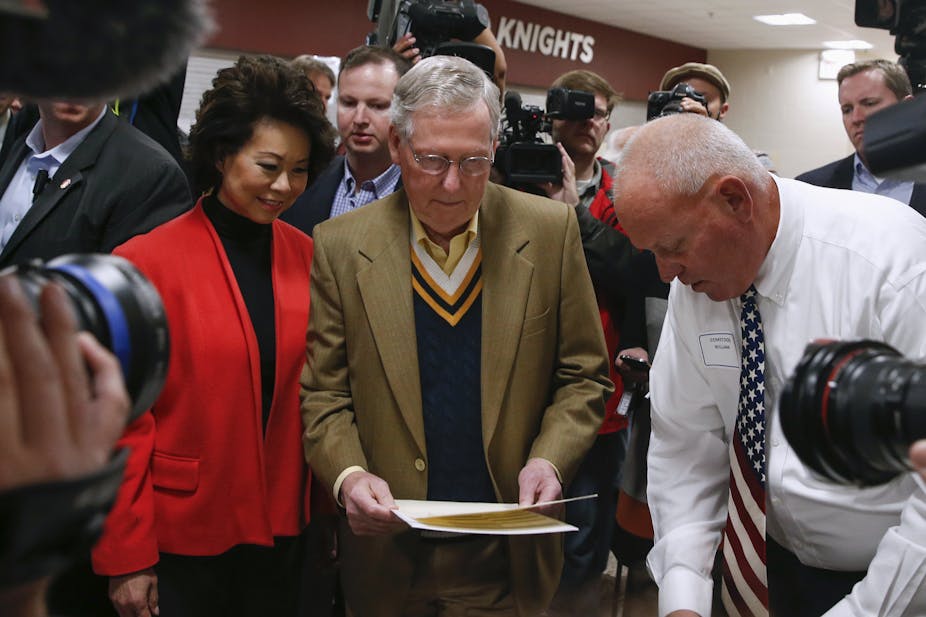No denying it, Tuesday was a big day for Republicans. They took control of the Senate, expanded their majority in the House, and added to the number of governorships they hold.
The Senate outcome is rightly seen as the top achievement in that it not only altered the fate of individual politicians, but also shifted institutional control. In their own way, the House results also made a mark, giving the GOP the largest House majority it has had in more than a half century. New highs for recent times were also reached in terms of the number of Republican governors and state legislators.
A bit of caution with those numbers…
Beyond that, the numbers signify less than they seem. For one thing, in absolute terms, Republican’s gains were about average for the non-presidential party in a midterm. The 1994, 2006, and 2010 midterms were “wave” elections where the non-presidential party greatly exceeded the historical average. The 2014 elections were not of that type.
Midterms are also poor predictors of what will happen two years later in the presidential election. Since 1980, the victorious party in the midterm elections has lost five of the eight subsequent presidential elections.
The outcome of midterm elections is most predictive of the Senate races six years later, when the victorious party has the unenviable task of defending all the seats that it won. Democrats’ banner year in the 1974 Senate midterms, for example, was followed in 1980 by a net loss of 12 seats. Republicans didn’t fare as badly in 2008 when defending their Senate victories of 2002 but it was not pretty: eight seats switched over to the Democrats.
So where are we today? The two biggest facts about American politics in 2014 are that the two parties are, first, polarized and, second, equally strong.
The stand off continues but for how much longer?
Aside from the presidency, Republicans have the institutional edge while the Democrats have the popular edge: a greater number of Americans call themselves Democrats than label themselves Republicans.
These two large facts about our parties — polarized but evenly matched — are, in my view, connected.
The polarization will likely persist until the balance of power shifts dramatically in favor of one party. Historically, that’s been the dynamic of two-party systems. If one party becomes dominant, the other party, if it is to remain competitive, has to move closer to it.
An example is the Republican Party’s response to the 1930s party realignment that put the Democratic Party in charge of the nation’s politics. From a position of steadfast opposition to the New Deal, the Republican Party by the 1950s had adjusted to it. Said Republican President Dwight D. Eisenhower: “Should any political party attempt to abolish social security, unemployment insurance and eliminate labor laws and farm programs, you would not hear of that party again in our political history.”
So which party will lead us out of our polarized times?
Tuesday night suggests the odds have increased that it will be the Republicans. That’s a possibility – if the GOP can figure out what a meaningful form of compassionate conservatism would look like. Then, its message of lower taxes and smaller government might resonate with those who now perceive it as the party of the selfish and the mean-spirited.
The Democratic Party could also breakout by riding the demographic wave. If it continues to attract, as it has in recent elections, a sizeable majority of the vote of Hispanics, Asian Americans, and young adults, who are becoming an ever larger part of the electorate, the GOP will be in deep trouble in the long run.
So how do we sum up Tuesday’s vote? As I see it, change in lots of medium and small ways but no great change in the polarization that bedevils our politics. So it’s on to next stop in America’s ongoing melodrama. Let the 2016 campaign begin.

